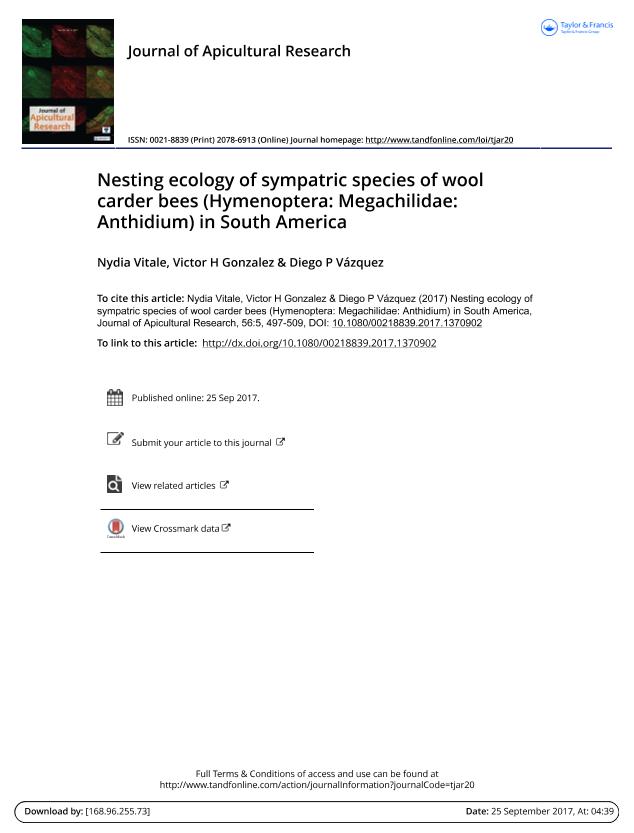Artículo
Nesting ecology of sympatric species of wool carder bees (Hymenoptera: Megachilidae: Anthidium) in South America
Fecha de publicación:
09/2017
Editorial:
International Bee Research Association
Revista:
Journal Of Apicultural Research
ISSN:
0021-8839
Idioma:
Inglés
Tipo de recurso:
Artículo publicado
Clasificación temática:
Resumen
Using a total of 14,043 trap-nests (potential nest for bees), we documented the nest architecture, host plants, seasonality,and associated organisms of the following six native species of Anthidium (Megachilidae: Anthidiini) from the CentralMonte Desert in Mendoza, Argentina: A. andinum Jo¨ rgensen; A. chubuti Cockerell; A. decaspilum Moure; A. friesei Cockerell;A. rubripes Friese; and A. vigintipunctatum Friese. Each species exhibited unique features in the arrangement of thefibers used to make their cells, and in the type of material used in the nest plug. Bees used a total of 41 plant species,but relied heavily on Prosopis flexuosa (Fabaceae) and Larrea spp. (Zygophyllaceae). Most bee species are univoltine andexhibited delayed emergence. The oil beetle Nemognatha sp. (Coleoptera: Meloidae) and the cuckoo wasp Chrysis striatulaBohart (Hymenoptera: Chrysididae) are recorded for the first time for Anthidium. Nemognatha sp. was the mostcommon brood parasite but C. striatula caused the highest brood mortality.
Archivos asociados
Licencia
Identificadores
Colecciones
Articulos(IADIZA)
Articulos de INST. ARG DE INVEST. DE LAS ZONAS ARIDAS
Articulos de INST. ARG DE INVEST. DE LAS ZONAS ARIDAS
Citación
Vitale, Nydia Luciana; Gonzalez, Victor H.; Vazquez, Diego P.; Nesting ecology of sympatric species of wool carder bees (Hymenoptera: Megachilidae: Anthidium) in South America; International Bee Research Association; Journal Of Apicultural Research; 56; 5; 9-2017; 497-509
Compartir
Altmétricas




